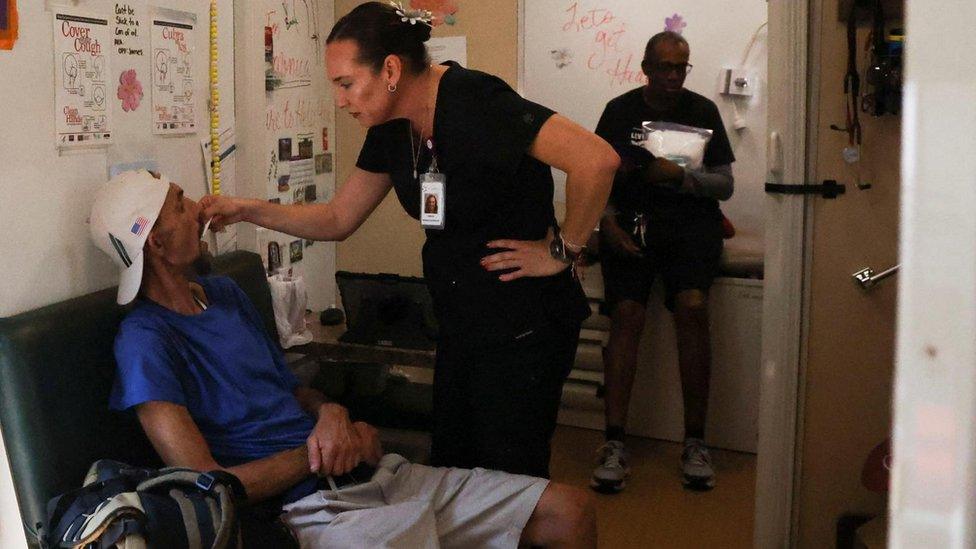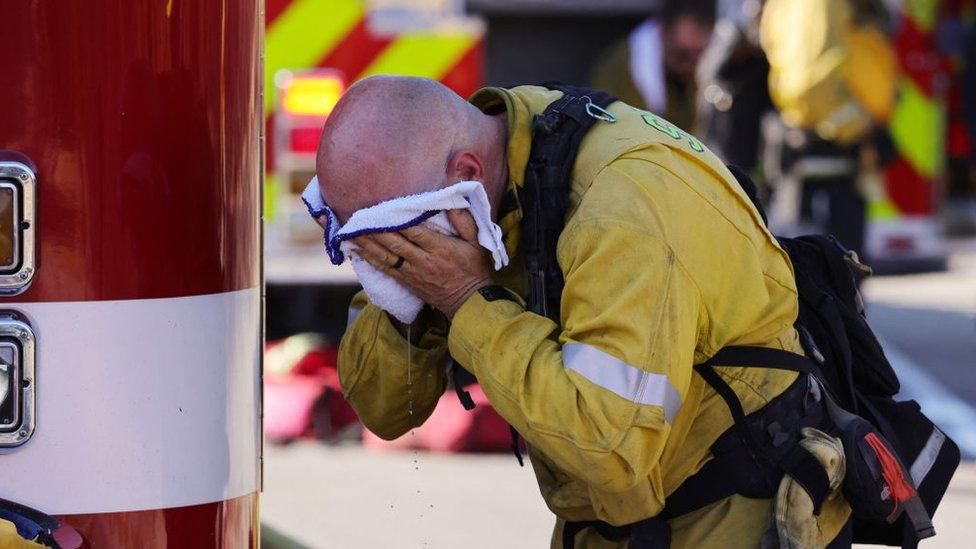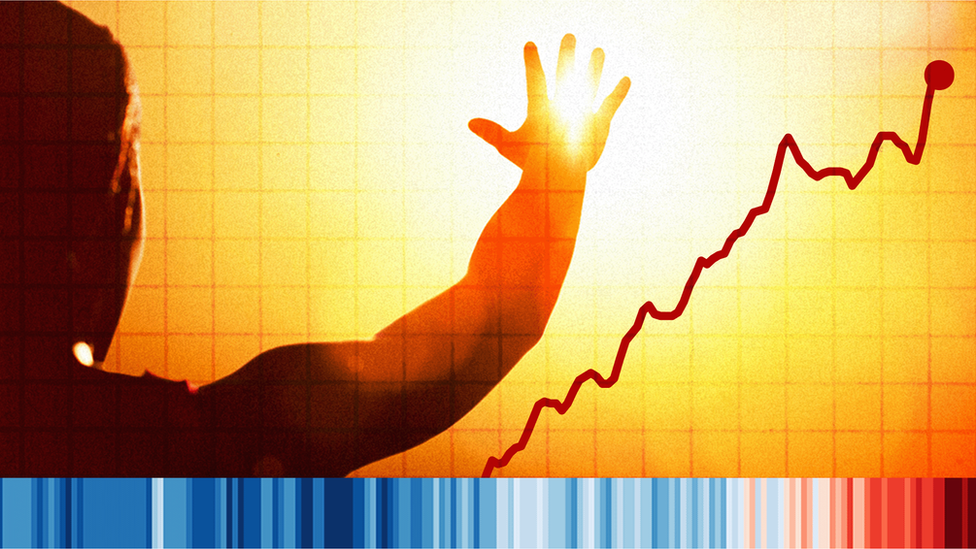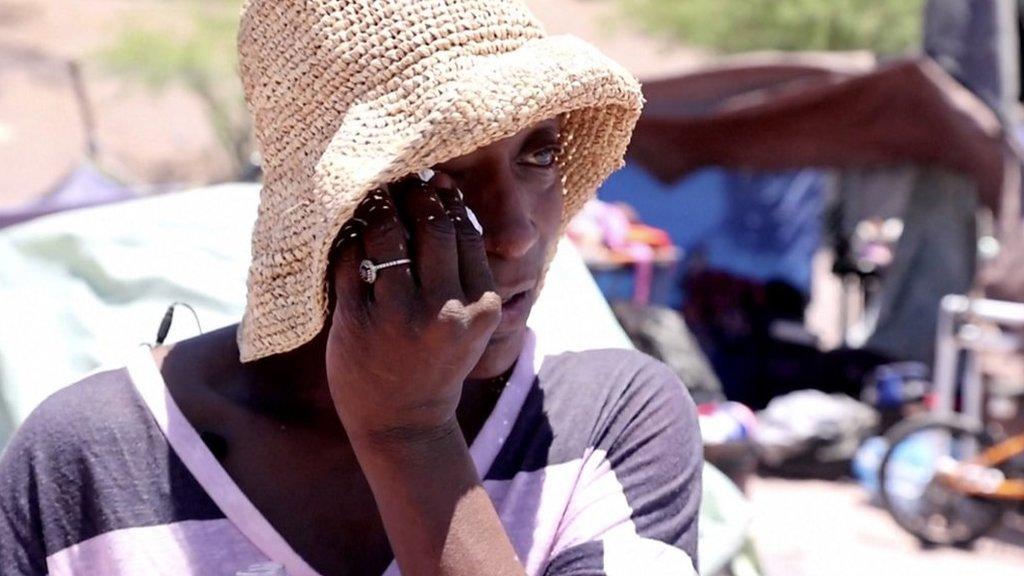US heatwave leads to rising number of burns, medics say
- Published
Watch: Heatwave hits homeless people: ‘I cry all the time'
A prolonged heatwave in the US has led to an uptick in severely burned patients who were injured after touching hot surfaces or objects.
Medics in Arizona said some patients were hurt after falling onto asphalt which had been heated by the sun.
The city of Phoenix has now seen a record-breaking 24 consecutive days of temperatures above 110F (43C).
Officials warn that ground temperatures can reach near-boiling, and warn people to seek shelter from the fiery heat.
Dr Kevin Foster of the Arizona Burn Centre tells BBC News that all of the centre's 45 hospital beds are currently occupied, and around one-third of those patients have suffered severe contact burns from scorching concrete and asphalt surfaces.
"Summertime is the busy time, so that's not surprising, but the numbers are a little bit higher than anticipated," he says, adding that the rate of new patients has outpaced 2022 so far this summer.
Many of the patients are elderly people, who may have fallen after becoming unsteady in the heat, or children who do not get off the ground quickly after falling.
However, he says the "biggest problem" is drug users who are often dehydrated and can faint on sidewalks.
"When people go down to a hot surface and stay there, it only takes 10 to 15 minutes to suffer heat exhaustion, burns and other problems," says Dr Foster, adding that some of the burns are deep, third-degree injuries that will require skin grafts.
The centre is also treating over 150 patients who have not been admitted to hospital, but need to be treated for burns sustained touching hot surfaces, such as metal car seat belts.
The inside of a car or the dark asphalt surface of a road can be far hotter than the air temperature, research has shown. Touching metal or asphalt for only a few seconds can be enough to cause severe burns.

Mobile medical units are continuing to help people who are without shelter during the heatwave in Phoenix
Cleo Warner helps co-ordinate the Heat Relief Network in Arizona's Maricopa County. The network now works with with 235 cooling and hydration sites which people can visit to soak in a few hours of air conditioning and water.
The locations serve hundreds of people on a weekly basis, she says. Many people using the centres are unsheltered, although they also include people who do not want to, or cannot afford, to run their air conditioner all day.
All of the centres are run by volunteers, often out of businesses that have a few spare chairs in a cool room, or non-profit organisations such as houses of worship. The network began during another "particularly rough" heatwave in 2009, she tells BBC News.
This is the first year that the network has included respite centres where people can lie down and sleep during the hottest hours of the day.
There are now 18 respite centres, she says, adding that they came about in response to requests from the community.
The danger from surface burns is also being seen in nearby regions that have been hit by extreme heat.
Christopher Malcolm, a 73-year-old US Air Force veteran in Las Vegas, told NBC News, external that he was badly burned after sitting on the ground at a bus stop on a day with temperatures reaching 110F.
"I guess the pavement was hot enough so that it burned, although I was wearing blue jeans," he said, adding that he did not realise the extent of his injuries at first.
"I've dealt with heat before," he said. "I lived in the Philippines for about seven years. Never had any problems with heat."
Related topics
- Published24 July 2023

- Published22 July 2023

- Published18 July 2023
